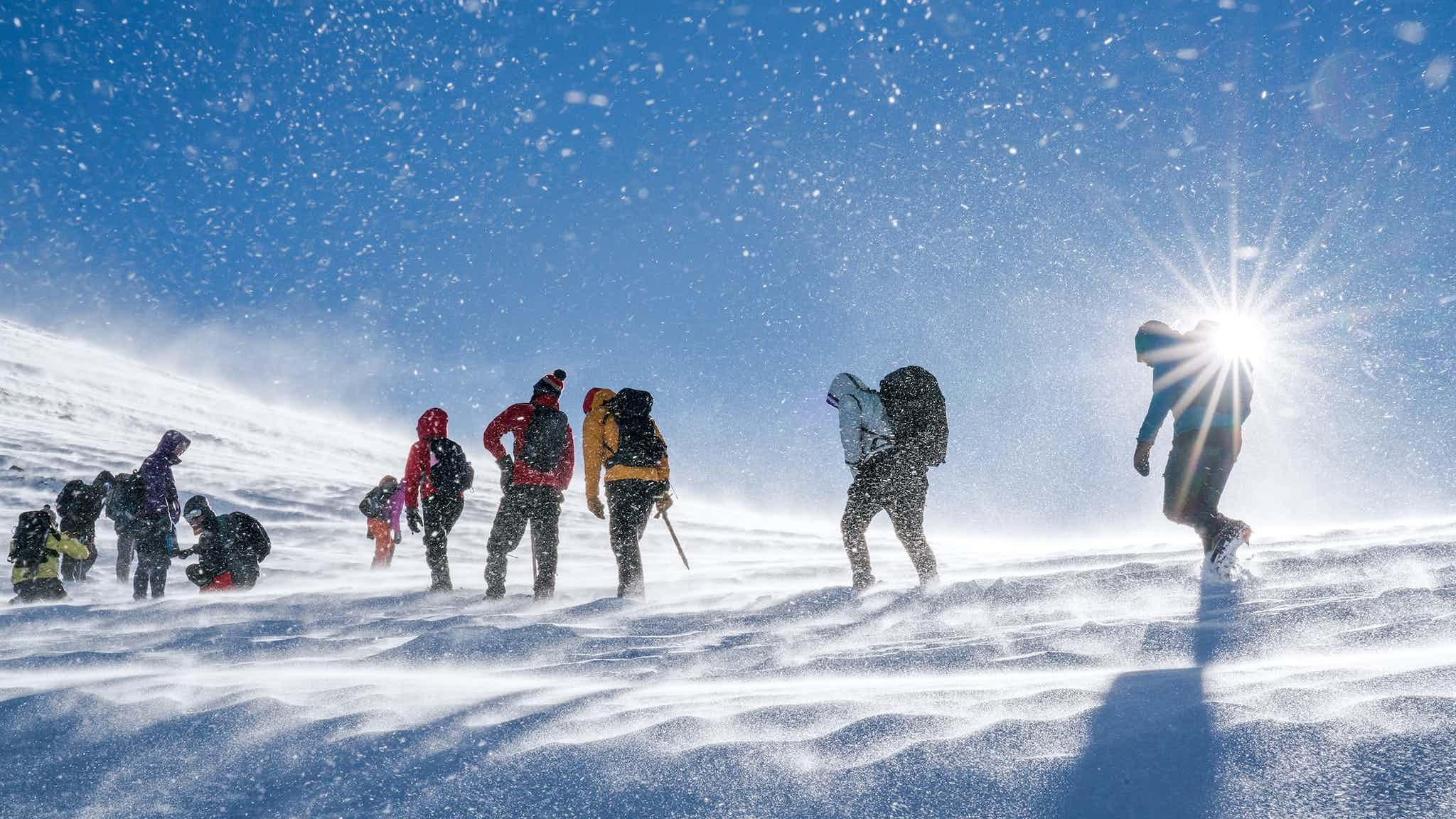The views from the summit of Morocco's Mount Toubkal, the snow-soaked, 4,167m high point of North Africa, reach out over the Atlas Mountains to Marrakech, 40 miles (60km) to the north, and to the dusty beginnings of the Sahara Desert, which stretch out to the south.
“Climbing Toubkal in the summer has its advantages, but climbing in winter does too,” says Mohamed Aztat, a Berber guide based in Imlil, the gateway town to the Atlas Mountains. “If you climb in winter, you see the mountains covered in snow, and because the temperature is down, there’s less haze, so you can see a lot further to the south from the summit, whereas in summer, because of the heat you can’t see as much.”
Guiding work has restarted, but our business is still affected by the earthquake. Business is still a bit slow.”
The summit of Toubkal is marked by an iconic trig point; a large, four-legged metal pyramid, graffitied with the names of climbers who have completed the demanding two-day climb up the mountain.
“The pyramid is still up there,” says Mohamed. “The earthquake moved the stones around one of the four legs, but people have put more stones around it. So it’s still up there.”
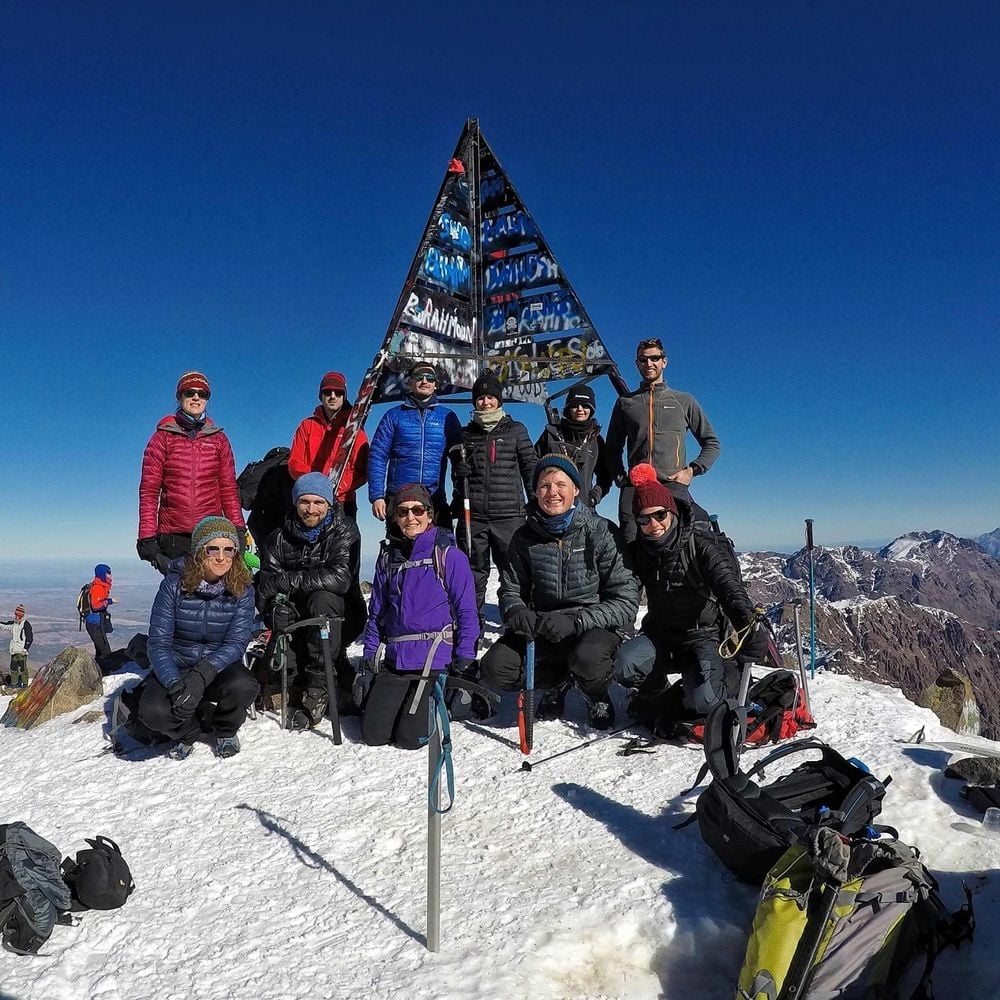
On September 8, 2023, just after 11pm local time, a 6.8-magnitude earthquake struck the remote High Atlas mountains of Morocco. Word spread quickly, and the next morning, the world woke up to the devastating news that thousands had tragically died in the tremors.
“Luckily I was in a camp which kept us safe, closer to Marrakech than to the Atlas Mountains when the earthquake happened,” Mohamed told me at the time.

While Marrakech was largely unaffected, the earthquake caused the collapse of buildings and indeed entire towns around the epicentre. For the many, like Mohamed, who work in tourism in the region, the quake also temporarily removed their livelihoods. Aztat was also forced to cancel all of his upcoming tours while mountain refuges and base camps were repaired, safety checks were carried out and trails were cleared of rubble and rebuilt, but tourism has now returned safely to the High Atlas mountains - albeit slowly and surely.
“The mountain huts, and our base camp, are now up and running,” Mohamed says. “They are all repaired and they've been receiving guests now for quite a few weeks. Everything is back to normal on the trails. The refuges that we used to use before the earthquake have been repaired, so we can use them again - apart from in one village, which is called Tinzert. It was destroyed completely. So we have to add a few hours to get to another gîte in a neighbouring village.
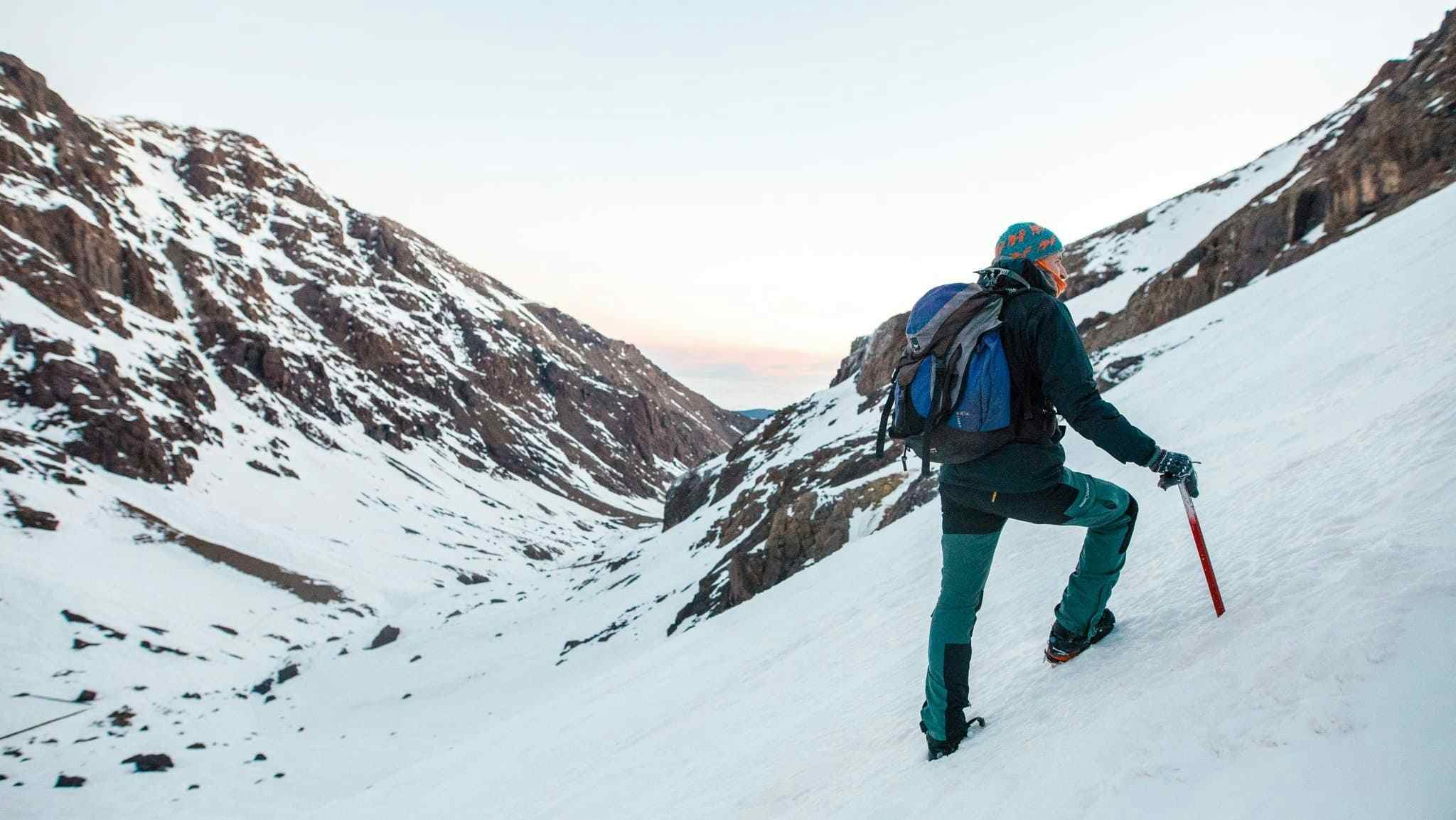
“Hundreds of customers have already been up to Toubkal since the earthquake - and everything is run just as smoothly as it did before the earthquake. So guiding work has restarted, but our business is still affected by the earthquake. Business is still a bit slow.”
Mohamed grew up in the Imlil region, and knows Mount Toubkal as well as anyone.
“I first climbed Toubkal in 1991, as a child,” he tells me. “Before I worked as a guide, I worked as a muleteer during the school holidays. My first time climbing Toubkal was when I was 13 years old, and now I’m 45.”

The ascent of Mount Toubkal typically takes two days from Imlil. Day one consists of hiking into the Toubkal Valley, passing Berber farming villages and climbing from foothills into the Atlas Mountains proper. You’ll spend the night at the Neltner refuge, or ‘Refuge de Toubkal’, at 3,207m, which was first built by the Club Alpin Français in 1938 (and renovated entirely in 1999).
The next day, you’ll rise early and - after feasting on bread, fruit, eggs and drinking an essential dose of Moroccan mint tea for breakfast - you’ll set out in the dark, guided by the light of your guide, and your head torch. You’ll slowly ascend the final 1,130m to the summit and trig point of Toubkal, then, after reaching the summit and watching the sun rise from the highest point in North Africa (and enjoying a very well deserved lunch on the summit), you’ll begin the long descent back down the mountain - past the refuge and all the way to Imlil.
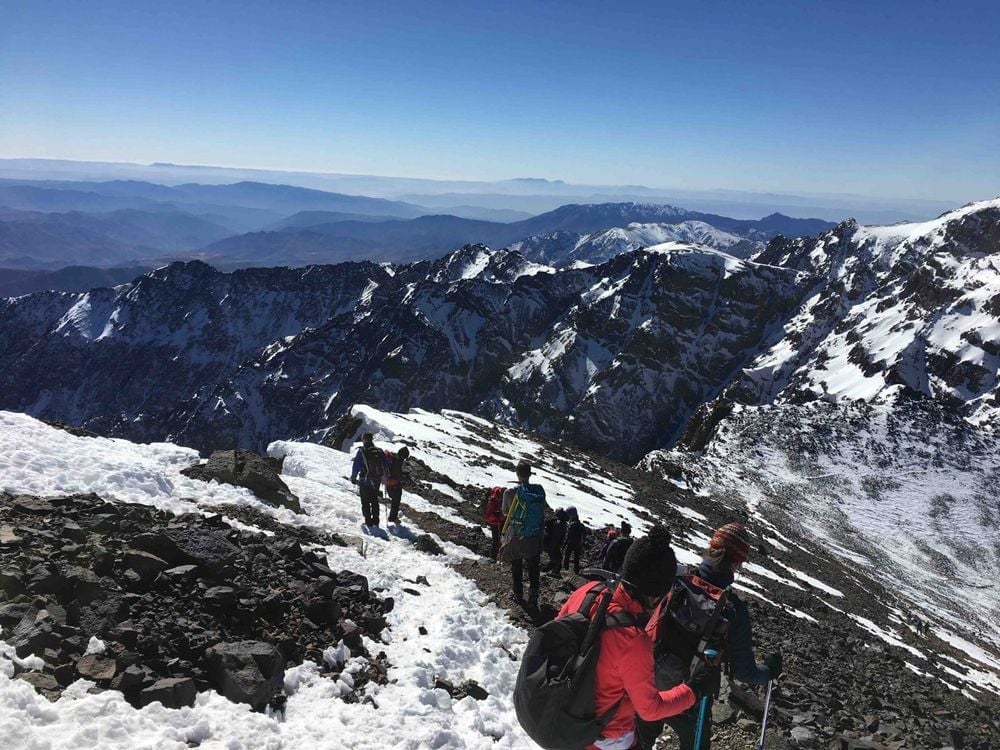
In winter, you need to be particularly careful on the climb and descent, as the conditions will be slippy.
The summer climbing season on Mount Toubkal runs roughly from May to October, while the winter season, during which climbers require mountaineering experience and competence with kit like crampons and ice axes, runs from November through to April.
In order to gain that competence with winter equipment, winter climbers often spend an extra night at the refuge, during which they’re able to not only acclimatise, but also familiarise themselves with the use of crampons and ice axes. This is an ideal option for those looking to get more confident using both pieces of kit at altitude, in an appropriate environment, before heading on to the summit of the mighty Mount Toubkal.
The summit day was one of the best days of my life and was so perfect in every way.
As with any mountain ascent, the challenges are often dictated by the weather conditions.
“During the summer it’s a challenging walk,” says Aztat. “It’s mainly the altitude that’s the challenge, and there is some scrambling to reach the summit. But during the winter, it depends on the snow conditions. There can be icy slopes going up to Toubkal, so you need to have experience using crampons and ice axes. If there’s a wind then it becomes more dangerous, given the ice. So people need to be experienced and have good kit. Other times, though, you can find summer conditions even in the winter. Currently [December, 2023], Toubkal at 4000m is still without snow. Usually we expect a full fall of snow by the end of October.”
The conditions on a windy winter morning can be extremely cold on the summit of Mount Toubkal - in the vicinity of -15°C - so it is imperative that you come prepared for the cold.
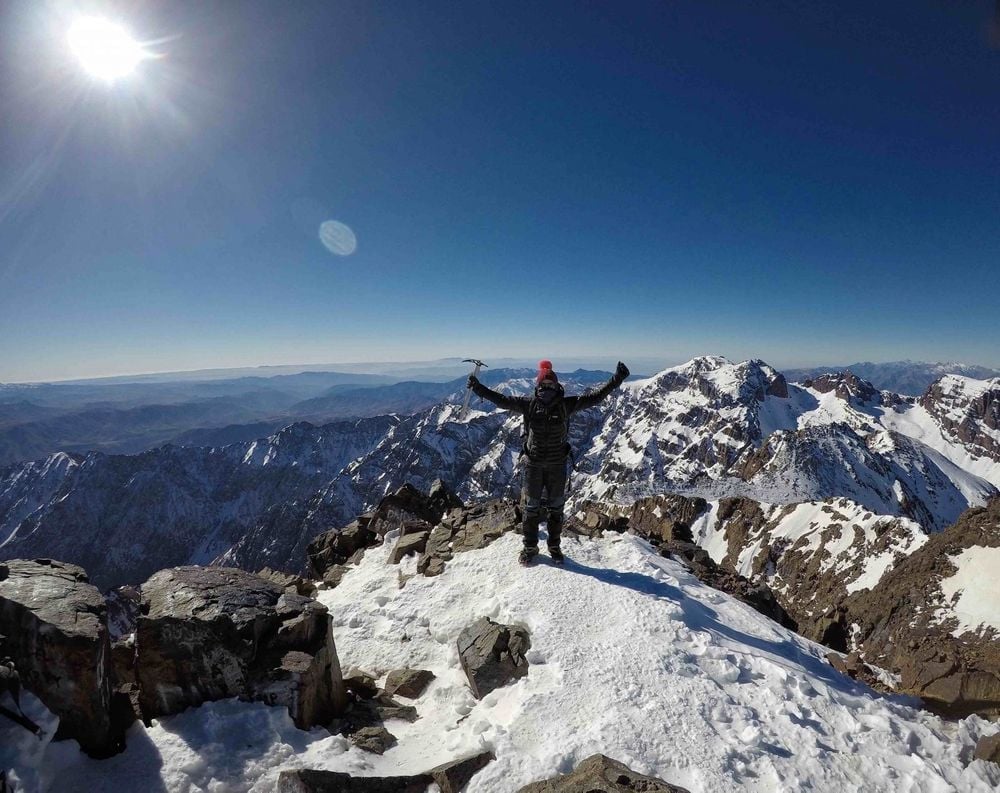
But the rewards for making the climb in the snow are vast.
As Much Better Adventurer Hannah Marshall wrote after climbing Toubkal on Christmas Day in 2021:
“I was worried about so many things. I was scared I was going to freeze to death as I was already freezing in northern England in December. I was worried I might blow off the edge and more than anything, I was worried I wouldn’t make it to the top.
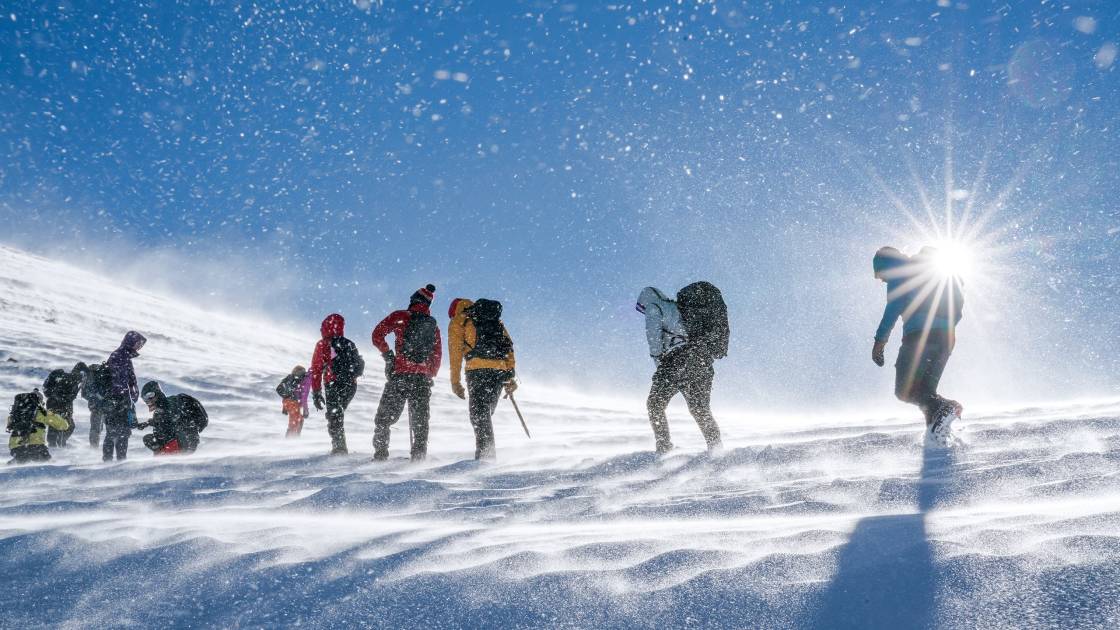
“The summit day was one of the best days of my life and was so perfect in every way.”
Hannah concluded: “When I touched the top, I was overcome with emotion and felt a surge of pride and joy, surrounded by 360-degree views across the snow-topped peaks, lower Atlas Mountains and even into the desert. [...] We were extremely lucky with the weather conditions on our summit day, with bright blue skies and zero wind it was just perfect in every way. I definitely didn’t need to be so worried.”
Business is back in the frost-tipped Atlas Mountains. For those set on a challenge, Toubkal, the highest of them all - and the views that come with it - await.
Inspired? Check out our four-night trip: Climb Mount Toubkal: The Winter Edition!

